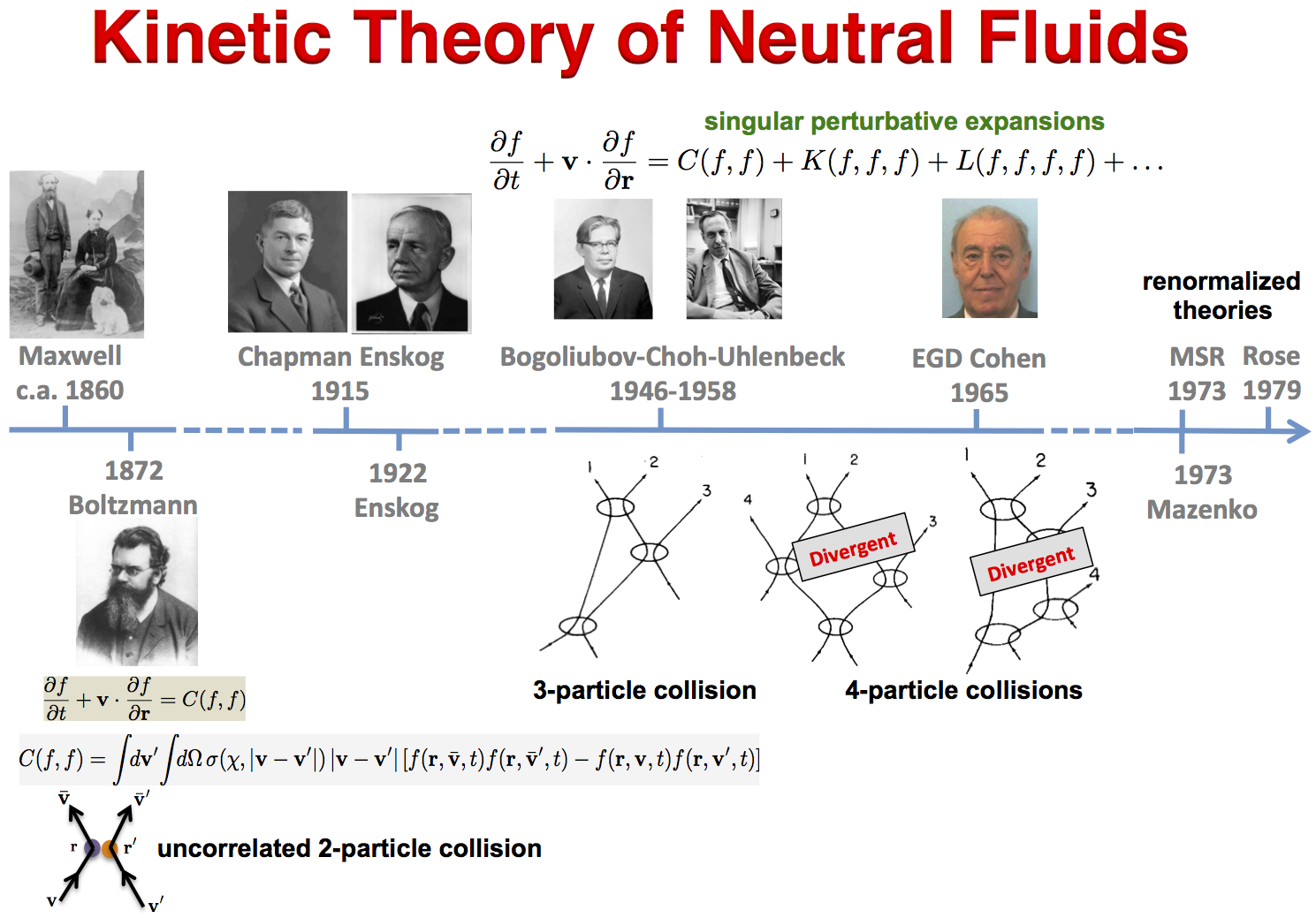Kinetic Theory
Kinetic theory attempts to describe and predict the properties of gases and liquids in terms of the microscopic interactions and motions of their constituent molecules. For dilute gases, the celebrated Boltzmann kinetic equation has satisfactorily achieved the basic goals of kinetic theory. Unfortunately, because it is based on the assumption of uncorrelated binary collisions, the Boltzmann equation gives a satisfactory description of the behavior of sufficiently low-density gases with short-range interactions only and is inadequate to describe dense fluids and plasmas. In spite of numerous efforts, no one has yet succeeded in deriving a comparable equation for dense gases and liquids, let alone strongly coupled Coulomb systems. In the latter case, particles interact via long-range (screened) Coulomb forces, and their interaction energy dominates their average kinetic energy.
The challenges posed by strongly coupled Coulomb systems are not unlike those encountered with dense neutral fluids. The foundation of modern kinetic theory dates back to 1872 when Boltzmann published his famous equation for the single-particle distribution function for dilute gases. The solution of the Boltzmann equation, derived independently by Chapman and Enskog around 1915, achieved two basic goals of kinetic theory: it (i) established the connection between the microscopic dynamics and the macroscopic equations of hydrodynamics and (ii) provided explicit expressions for the transport coefficients in terms of the molecular parameters. It was only after about 1946, under the impetus of Bogolyubov’s ideas, that concentrated efforts to generalize the Boltzmann equation systematically to higher densities were undertaken. Starting with the Liouville equation, a method was worked out, notably by Bogolyubov, Choh and Uhlenbeck, Green and Cohen and others, which amounts to a systematic inclusion of many-body collisions through a density expansion similar to the virial expansion for computing equilibrium properties of dense gases. In the mid-60s, it was realized that the density expansion of the collision operator is plagued by divergences. Those divergences are not unlike those encountered in quantum field theories. Those findings, together with others permitted by the advent of computer simulations, shifted attention toward the development of a renormalization (regularization) procedure, which would encompass the theoretical divergences and take proper account of the correlated collisions, whereby particles interact via the effective (renormalized) potential that integrates the average effects of the medium on the bare interactions.

For Coulomb systems, the need for renormalization techniques has long been recognized in traditional plasmas physics, where the long-range character of the Coulomb interaction yields to screening of the interaction. In 1936 Landau regularized the Boltzmann equation to deal with the Coulomb potential by introducing ad hoc cutoffs. In 1960, Lenard and Balescu independently derived an equation that describes the dynamics of charges undergoing binary collisions in their screened interactions. Neither the Landau nor the Lenard-Balescu equation can describe the dynamics of strongly coupled Coulomb systems. In 1977, Ichimaru proposed a renormalized kinetic theory that, however, presents several flaws.

Recently, by recasting the problem into a field theory, we have developed a systematic approach to develop renormalized kinetic equations that can describe the dynamics of classical, strongly coupled fluids, including liquids and plasmas. The basis of the theory is an effective action, which plays the role of the partition function in equilibrium statistical mechanics, and can be used to close the BBGKY hierarchy and derive kinetic equations. This new approach extends and unifies previous approaches, but the route to a practical kinetic equation of strongly coupled Coulomb systems is still long.
References
Our own recent works can be found here.
Other standard references:
S. Ichimaru, Statistical Plasma Physics, Volume 1: Basic Principles, Addison-Wesley Publ. Company (1992).
E.M. Landau and L.P. Lifshitz, Physical Kinetic, Vol. 10 (Elsevier Ltd, 1981)



